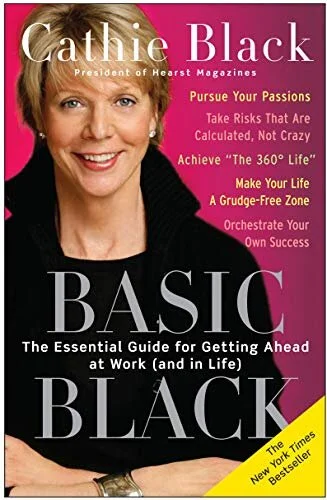Williams-Borden Neighborhood
Soon after I bought The Bungalow, I learned my “new” place was situated in the historic Williams-Borden Neighborhood of Galveston. Naturally, I was curious about the neighborhood’s name and of its namesakes. Quickly, I was educated!
The Williams-Borden neighborhood is named for two of the earliest landholders in the heart of Galveston Island. The mission of the neighborhood association is to encourage preservation, revitalization and neighborhood livability efforts within its boundaries, the surrounding community and Galveston Island. WBNA serves not only as a community organization but also as an advocate for residents, property owners and business.
Samuel May Williams House
Samuel May Williams built his home, located at 3601 Ave P, in 1839, and it is one of the oldest on the island. It is currently being cared for by the Galveston Historical Foundation.
Thomas Henry Borden built his home, located at 3827 Ave P, in 1874. Borden was one of the original 300 setters or the Stephen F. Austin Colony. The home is currently a private residence.
Williams-Borden Neighborhood lies in the heart of Galveston Island, between Avenues M & S and from 35th to 39th Streets.
-
2022
- Mar 17, 2022 Ivy Dishes
- Jan 29, 2022 Grace Episcopal Church
- Jan 1, 2022 100 Years
-
2021
- Aug 25, 2021 My Fig Tree
- Apr 28, 2021 Darlene's Shrimp
- Apr 24, 2021 Oleander Festival
- Feb 27, 2021 Great Winter Storm
- Feb 10, 2021 The Mourning Wave
-
2020
- Oct 26, 2020 Crepe Myrtles
- Sep 18, 2020 Trimming the Palms
- Jul 19, 2020 The Dancers
- Jul 11, 2020 Postcards
- Jun 20, 2020 Resilience Flag
- Jun 19, 2020 Juneteenth
- Jun 10, 2020 Silk Stocking
- May 27, 2020 Tree Sculptures
- May 6, 2020 Babe's Beach
- Apr 22, 2020 Opera House
- Mar 2, 2020 Texas Heroes Monument
- Feb 15, 2020 Mardi Gras Parade
- Jan 19, 2020 St. Joseph's Church
-
2019
- Dec 15, 2019 Celebrations
- Nov 6, 2019 Fresh Paint
- Oct 21, 2019 Jazz Age Series
- Oct 20, 2019 ARToberFEST
- Oct 6, 2019 Stingeree
- Oct 5, 2019 Pumpkin Time
- Oct 2, 2019 Sea Turtles
- Sep 29, 2019 Powhatan House
- Sep 24, 2019 The Dolphins
- Sep 5, 2019 Lucas Apartments
- Aug 24, 2019 Sandcastles
- Aug 9, 2019 The Daily News
- Jul 18, 2019 Beach Walk
- Jul 10, 2019 La King's
- May 25, 2019 Pleasure Pier
- May 1, 2019 Bolivar Ferry
- Mar 15, 2019 Saengerfest Park
- Jan 19, 2019 Moody Mansion
-
2018
- Dec 18, 2018 The Vintage Suitcase
- Dec 17, 2018 Festival of Lights
- Dec 2, 2018 Sunday Brunch
- Nov 21, 2018 Hendley Row
- Oct 27, 2018 Island Oktoberfest
- Sep 20, 2018 The Strand Clock
- Sep 16, 2018 St. Mary Cathedral
- Aug 11, 2018 No More Shed
- Jun 10, 2018 Rosenberg Library
- May 7, 2018 Stepping It Up
- May 3, 2018 A Happy Hour
- May 1, 2018 Ashton Villa
- Apr 21, 2018 96th Birthday
- Apr 1, 2018 Seawolf Park
- Mar 27, 2018 Ball High School
- Mar 15, 2018 East End
- Feb 1, 2018 Tremont House
- Jan 26, 2018 Menardi Gras
- Jan 24, 2018 Mardi Gras Decor
-
2017
- Dec 1, 2017 Miss Ruby
- Oct 8, 2017 Railroad Museum
- Oct 7, 2017 Tall Ship Elissa
- Sep 9, 2017 Star Drug Store
- Sep 8, 2017 1900 Storm Statue
- Aug 6, 2017 The Turquoise Table
- Aug 1, 2017 Bishop's Palace
- Jul 23, 2017 Garten-Verein
- Jul 21, 2017 Yard Work
- Jul 16, 2017 The Strand
- Jun 17, 2017 Stewart Beach
- Jun 7, 2017 The Original
- Jun 3, 2017 Murdochs
- May 27, 2017 Bryan Museum
- May 19, 2017 Firemen on Call
- May 13, 2017 Williams-Borden Neighborhood
- May 1, 2017 Oleander City
- Apr 28, 2017 God Winks




